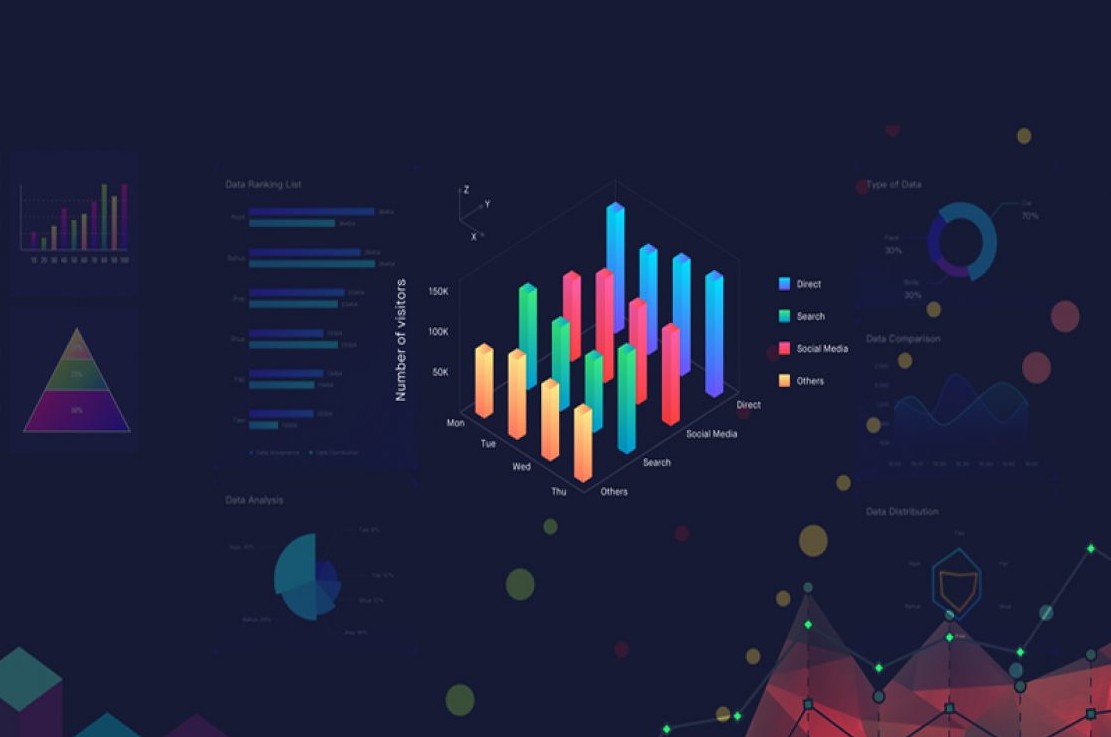Blitz News Digest
Stay updated with the latest trends and insights.
Seeing is Believing: Transforming Data into Visual Masterpieces
Unlock the power of data visualization! Discover how stunning visuals can transform numbers into captivating stories. Click to explore!
How Data Visualization Can Enhance Your Understanding of Complex Information
Data visualization is a powerful tool that transforms complex datasets into easily understandable visuals, allowing users to grasp intricate information quickly. By presenting data through various formats like charts, graphs, and maps, it caters to diverse learning styles and accelerates comprehension. For instance, a detailed dataset can overwhelm users if presented in raw numbers; however, visual representations can highlight trends, patterns, and anomalies, making the information more accessible and actionable. As a result, stakeholders can make more informed decisions backed by clear visual insights.
Moreover, data visualization fosters better communication and collaboration within teams. When complex information is distilled into visual formats, it becomes easier to share findings with colleagues and clients. This collaborative approach is particularly crucial in environments where data-driven decisions are paramount. For example, using interactive dashboards allows team members to engage directly with the data, exploring different variables and scenarios. Consequently, this collaborative effort enhances overall understanding and drives a more data-informed culture within organizations.

The Art of Data: Creating Compelling Visual Stories
The art of data lies not only in its collection but also in its presentation. By transforming raw numbers into insightful visual stories, we enable audiences to grasp complex information quickly and effectively. Utilizing various data visualization tools, creators can depict trends, comparisons, and relationships that would otherwise be lost in static reports. This engagement is crucial in the age of information overload, where the clarity of data-driven narratives can make all the difference in decision-making.
To create compelling visual stories, consider employing the following techniques:
- Choose the right visual format: Bar charts, line graphs, and pie charts each serve different purposes
- Focus on simplicity: Avoid clutter—less is more when it comes to visuals
- Incorporate interactivity: Allow users to explore the data on their own for deeper understanding
- Use storytelling principles: Begin with a hook, build tension, and conclude with actionable insights
From Numbers to Narratives: Transforming Raw Data into Eye-Catching Graphics
In today's digital landscape, data is everywhere, yet its sheer volume can often overwhelm the average viewer. Transforming raw data into compelling visuals is essential for capturing attention and fostering understanding. Utilizing tools like infographics and charts allows content creators to distill complex numbers into relatable narratives. This not only makes the information more digestible but can also highlight trends and insights that might otherwise go unnoticed. By focusing on the storytelling aspect of data, businesses can engage their audience more effectively and communicate their messages with clarity.
Moreover, delivering data in an eye-catching graphic format enhances audience retention and encourages sharing across social media platforms. To achieve this transformation, consider following these best practices:
- Identify the key insights you want to communicate.
- Select the right type of graphic - whether it's a bar chart, pie chart, or infographic.
- Keep the design simple and focused, avoiding unnecessary clutter.
- Utilize contrasting colors and clear labels to enhance readability.